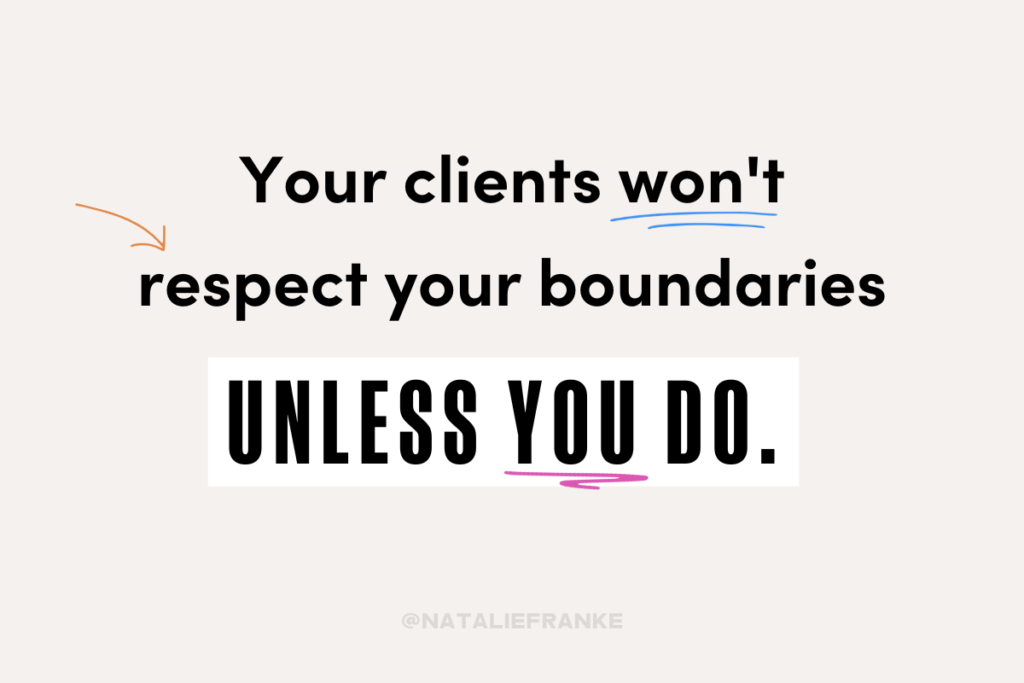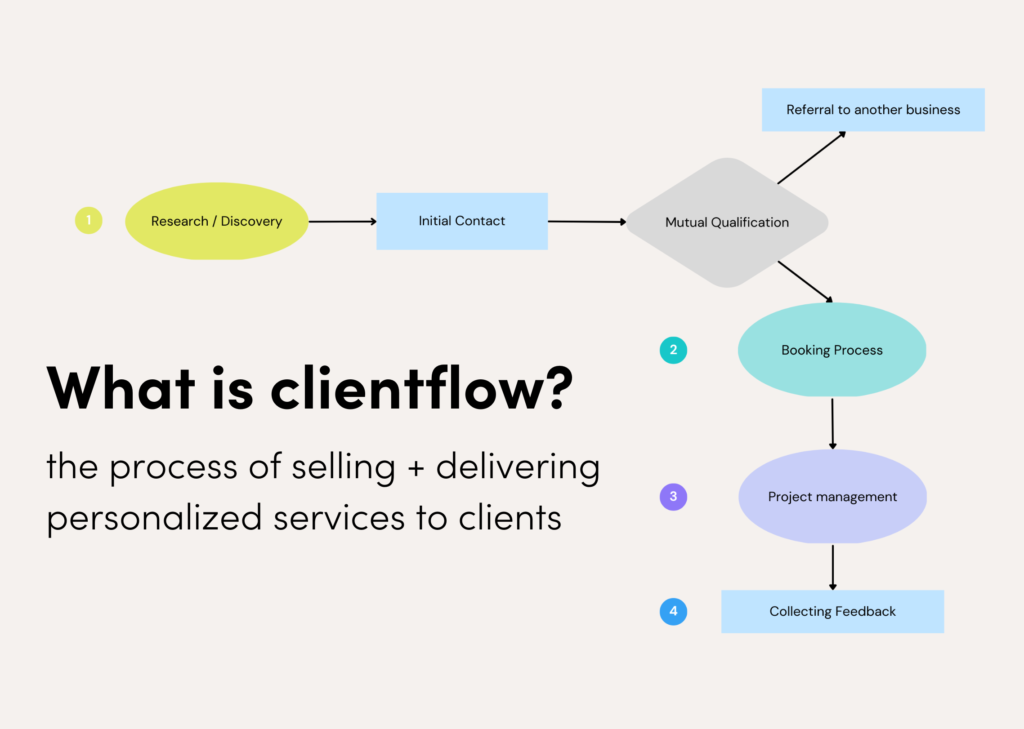When you realize you’ve failed to meet a client expectation, it can feel like a punch in the gut.
You’re ashamed you let someone down, something you swore you’d never do. You might even shrink back from social media out of guilt. How can you promote yourself (or share your off-the-clock adventures) when you know you’ve failed to deliver for someone, and they might be watching?
You’re also likely exhausted from trying (and failing) to make everyone happy. If this is how you’re feeling right now, you’re certainly not alone. (As a recovering people-pleaser myself, I’ve been in your shoes countless times when I was running my own wedding photography business.)
On top of that, client expectations have only increased in recent years, which means it feels like it’s getting harder for us to keep clients happy, rather than easier.
Today, consumers expect more from brands
Over the past decade, we’ve seen a seismic increase in what consumers want from brands — I call this the “Amazonification of client expectations.â€
For example, how many of you expect more transparency and visibility into the process when you buy something? You want to be able to track every shipped package down to the minute, right up until the moment it’s unloaded onto your doorstep. (And if it’s even only an hour later than promised, there will be consequences!)
We also have greater expectations of how quickly a brand responds to us, thanks to significant advances in technology and social media messaging options. We want answers now, not when someone is “available,†right?
🔎 Related: You’re right, Instagram has changed — now what?
It’s easy to point fingers at the pandemic for these shifts, but the reality is that we’ve been moving this way for some time. The pandemic only accelerated the trends that were already in progress.
That’s why, when I see data like this:
- 86% of consumers would leave a brand after as few as two poor experiences
- 49% of those consumers have dumped a brand due to a bad experience in the past year
I’m not surprised. You shouldn’t be either. However, the answer of how you rise to meet these expectations isn’t working yourself to death, every single hour of every single day. Quite the contrary.
Meeting your client expectations requires you to get clear on your boundaries, and put the systems and processes in place to support them.
You need to establish boundaries (and stick to them)
More often than not, when you have a client who is unhappy due to an unmet expectation, it coincides with a boundary being crossed.
For instance, if client communication friction is your bugaboo, replying to an email in the middle of the night — or visibly working at all hours of the night — is basically telling a client you’re available at all hours for work, even when you’re not. So, when you’re suddenly not available after 11:46 p.m. on a Saturday, which is a totally healthy thing by the way, they will be confused.
It’s also hard when you have client expectations that seemingly exceed the experience you feel you can provide. That’s stressful. Suddenly, you’re feeling insecure, plagued by fears of failure. You might even feel like you’re failing when you’re not failing at all.
On the one hand, your business isn’t your entire life
That means you absolutely must have boundaries in place, and you deserve to have them. You’re a human being with friends and family and hobbies and dreams that exist outside the virtual or literal walls of your business.
🔎 Related: Why you keep attracting bad clients (+ what to do about it)
You shouldn’t be working every waking moment of every day, nor should your clients expect you to be available 24/7. This is something I think many of us forget in a culture where some glorify “the hustle,†and the idea that your job is your entire identity.
But you need to remember this.

On the other hand, you need clear boundaries
If you aren’t upfront with clients about your boundaries — response time expectations, working hours, availability, etc. — how are they supposed to know what they are or how to plan for them?
This is a trap a lot of small business owners fall into, for a wide variety of reasons:
- You’re just starting out as a business owner, so you’re afraid to be unavailable. You need to go above and beyond with everyone, as you’re building your business.
- You’re a people-pleaser at heart, so you struggle with confidently asserting your boundaries, because you’re afraid of pushback.
- You’re not sure what your boundaries are or should be. You’ve operated without them for so long, and you thought this is just how it’s supposed to be.
- You assume certain things like after-hours phone calls and emails are obvious no-nos, so you don’t need to spell that out for your clients.
And to those, I say:
- Going above and beyond as a business owner is simply staying true to your word. That means setting clear and realistic expectations (and sticking by them) is enough.
- People-pleasing to the point where you contort yourself into a human paperclip is a one-way ticket to misery. Once more with feeling, that means setting clear and realistic expectations (and sticking by them) is enough.
- That’s not how it’s supposed to be. You deserve boundaries. Set them, communicate them, and stick to them. Your clients (and your sanity) will thank you for it.
- Never assume anything is obvious, especially when it comes to client expectations. When in doubt, over communicate and be proactive about it.
Of course, having boundaries and communicating them are only the beginning. You have to hold to them.
Your clients won’t respect your boundaries unless you do
It took me so long to learn this as a business owner.
I would proactively set client expectations that I would only be available during certain hours. Then I would send emails outside of those office hours, which basically communicated, “I lied! I’m pretty much always available!â€
That’s why features like Gmail’s scheduled send are *chef’s kiss*:
Slack also has a similar feature, by the way!
Look, the last thing life is, is convenient. Sometimes the only time you do have to catch up on work is late at night, when no child, pet, roommate, partner, unwatered houseplant, or rogue text from a nosy family member can derail you.
You can still write that email at 2 a.m., like a caffeine-powered machine, but you can schedule it to send the following morning, so you look like a Normal Human who keeps Normal Human Hours.
🔎 Related: 5 undeniable small business trends you can’t ignore
Yes, there will always be those fringe cases where you will need to work and respond after hours. When that happens, be clear that you’re doing so as an exception. Don’t hold it over their head and make them feel guilty about it, but don’t strike a tone that says, “Yes, you can bother me at all hours going forward! Especially at 3 a.m.!â€

Remember, a boundary isn’t a boundary if you always leave a door for someone to walk right through it.
Now, once you have your boundaries in place, you’re not done just yet …
Do your systems support your boundaries?
Guess who’s back — back again! Clientflow is back! Tell a friend … 🎶
That’s right! If you thought you were getting out of here alive without clientflow somehow making its way into the conversation, I’m utterly delighted to inform you that you’re oh, so very wrong.
Good, bad, or ugly, you have clientflow right now, and it defines every touchpoint in the experience someone has with you:

If you’re looking at that chart and scratching your head about where you should start, here are a few questions you should ask yourself:
- Do you have automated emails that are set to send to your prospects and clients, so they aren’t left wondering when they’ll hear from you?
- Do you set automated replies for when you’re unavailable or out of the office?
- Are you clear in your automated messaging about response times?
- Do you make it easy for them to complete steps on their own, without you needing to hold their hand every step of the way?
- Is your client experience seamless and personalized?
This is what makes clientflow so magical ✨
We’ve already established the first step to keeping your clients happy is to communicate what your clients can expect from you early and often. (Trust me, people-pleasers, this gets so much easier the more you practice doing it.)
🔎 Related: You don’t want to focus on clientflow, but your life depends on it
Your next and equally important step is to establish systems within your clientflow that support your boundaries. And whatever automations you create should set/reinforce expectations with clients that don’t create more questions than they answer.
When you focus on client expectations, you’re the ultimate winner
In 2021, a record-breaking number of new businesses were formed in the United States — 5,388,282 to be exact.
Of course, most people assumed that number would drop significantly in 2022; the spike was a blip, not a sign of a pattern … and they were wrong. Last year, 5,044,748 new businesses were formed. Sure, that number dipped slightly year over year, but the record-breaking trend of new businesses is clearly continuing.
That is not something you should fear.
Yes, it does mean more competition, but you should look at that as an exciting challenge. This is your call-to-action to prioritize the experience your clients have. And that experience can be extraordinary for your clients and for you.
Yes, you.
When you offer an extraordinary experience to your clients, it increases the quality of what you can offer. That means you can charge more, so you can stay focused on only serving the clients you truly want to take on — rather than saying yes to everyone who raises their hand to work with you, even if they’re not a good fit.
Will clients really pay more for a better experience? You betcha. In fact, 86% of buyers say they would pay more for services if it’s a better experience overall.
Your clients just want to matter. For some of them, even though you might think you’re “just a service provider,†you may be the one bright spot in their day where they feel truly seen and heard and understood.
🔥 Big news: Gutsy by Natalie Franke (my 2nd book!) now available for preorder
We’ve been made to feel as a society that we are unimportant and anonymous — a number, a commodity, a sold piece of data, a vanity metric, a follower count. You have an opportunity in how you structure your business to change that for the people you serve. You have the ability to show and tell your clients, “You matter. I see you.â€
That’s pretty badass, if you ask me.
Leave a Reply Cancel reply
© 2023 Natalie Franke
/
/
/
/
/